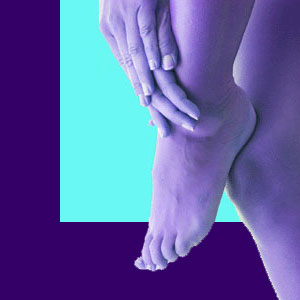
Metatarsalgia is a very common frontal foot pain syndrome which is known to usually affect serious athletes and is especially prevalent in runners. Like many forms of foot discomfort, metatarsal pain can be the result of a structural disorder or injury, but is also often the direct result of the psychosomatic process. The condition is named for the bones in the area affected: the metatarsals. Although these bones offer a namesake, they are not always the actual structures producing the painful stimuli. In a great number of patients, the pain is experienced in the soft tissues, including the muscles, tendons, fascia and nerves in the vicinity of the metatarsals and not in the bones or joints themselves.
This essay investigates the incidence of metatarsal region symptoms in the foot, with an emphasis placed on pain syndromes that are the direct result of the psychosomatic process.
What is Metatarsalgia?
This condition is characterized by pain in the ball of the foot and toes. There may be just pain or additional neurological symptoms, such as tingling and numbness, might also exist as well. Some patients endure these disturbing symptoms constantly, while others have recurrent attacks which are often linked to athletic exertion and especially high-impact activity.
Discomfort may be generalized or localized to the toe joints or areas where the toes join into the foot. It is difficult to characterize a typical case of metatarsal pain, since the symptomology can vary greatly from individual to individual. Some patients only have symptoms in a few toes, while others suffer agony in the entire frontal foot. A few cases change constantly in expression, but most maintain a consistent symptomatic pattern.
Metatarsal Pain Causes
Usually, the condition is thought to exist due to simple over exertion and abuse of the feet during performance sports. Doctors have many ideas how the joints can degenerate and how this wear and tear can create lasting pain. This is very similar to the same theories often applied mistakenly to the spine. Of course, in some cases, advanced degenerative changes can cause pain, as can obvious foot injury. Luckily, these circumstances typically respond well to appropriately designed treatment options and do not usually create lasting pain scenarios.
Many patients suffer from ischemia of the tarsal and metatarsal region as the actual source of symptoms. These people usually do not achieve a correct diagnosis, since their pain is commonly enacted by a psychosomatic process which is rarely identified for what it truly is.
Most of these patients suffer through a variety of unsuccessful treatments and some even endure unneeded surgery for their chronic foot pain. It is no surprise that these patients rarely find permanent relief, even through surgical interventions.
Mindbody Metatarsalgia
Metatarsal pain can be a common version of PIPS which is often linked to anxiety or fear surrounding athletic performance or the general fear of exercise. Dr. Sarno has referred to this condition as physicophobia and many care providers have successfully utilized knowledge therapy to successfully treat the symptoms once and for all. Of course, I almost always recommend at least considering this holistic and safe therapy option, since there are no risks (unlike the drug-based and surgically-based treatments so common to most foot pain syndromes) and no costs.
If your chronic metatarsal pain has not responded to a variety of seemingly appropriate treatments, you owe it to yourself to try something new. Maybe give knowledge therapy a chance. At the very least, think about getting an objective new opinion on the actual source of pain.
Back Pain > Psychologically Induced Pain Syndromes > Metatarsalgia




